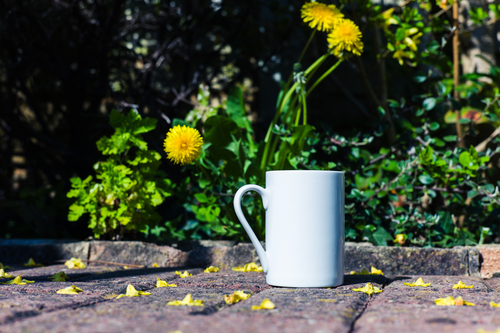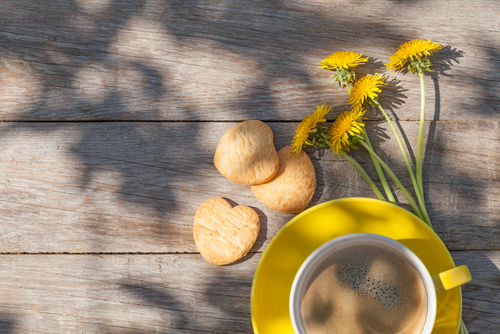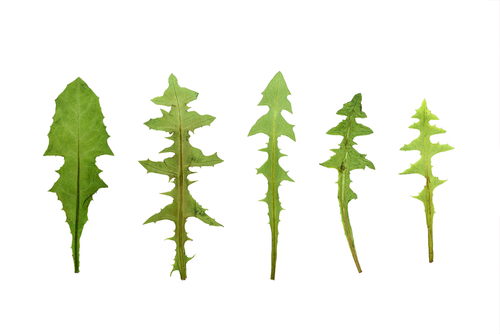Can you cut 1 Tonne of carbon pollution out of your life?
Take the challengeThis year we're venturing into the less explored when it comes to our food. We're looking at native ingredients, putting a stronger emphasis on seasonal foods, and having a foray into foraging! With that in mind, we'd like to you rethink the way you perceive the common dandelion!
Dandelion: Taraxacum
Dandelions are the most common and most persistent garden weed. These little yellow flowers pop up just about anywhere and everywhere, on abandoned strips of grass, between bricks and pavers and even on the most pristine lawn. But instead of killing or cutting them, here are 4 things you can do with dandelions that don't involve weed killers!
While dandelions wreak havoc in gardens, there is a host of benefits to adding these weeds to your everyday diet. Dandelion is rich with Antioxidants and vitamins including vitamin A and C. It also acts as a diuretic and digestive aid and can help to clear toxins from your liver and kidneys.
Always be careful adding something new like dandelions into your diet if you have allergies to other flowers such as chamomile or daises, or are pregnant, nursing or taking prescription medication.
Here are four ways to incorporate dandelion into your lifestyle!
Make the petals into tea

Image: Shutterstock
Similar to chamomile flowers, the petals from dandelions can be used to make a calming herbal tea that is delicately earthy in taste.
Here's how:
Find a patch of dandelions in an area where you know no chemicals or pesticides are being used on the weeds. Better yet, use ones in your own garden if they're there.
Collect about 20 small flowers or 10 big dandelions for one to two cups of tea. You can either use just the petals or the whole flower.
Rinse the flowers under running water or in a bowl
If using just the petals, cut them away from the bud of the flower with a pair of kitchen scissors and collect in a bowl or straight into your tea pot or tea diffuser.
The petals can be steeped for as long as you like, as there are no tea leaves it won't become bitter if you leave it for too long. Five minutes could be a good place to start depending on how strong you want it!
Strain the tea and drink up! A dash of honey and lemon can be added for a deeper flavour or to soothe a sore throat.
Grind the roots into coffee

Image: Shutterstock
Dandelion root coffee/tea is a great alternative to traditional coffee as it cuts down on your daily caffeine intake, is nutrient rich and can help cleanse toxins from the body.
Dandelion root tea and coffee can be found in health food stores or you could make your own! The roots will be sweeter in autumn as the plants gather sugars as fuel for the winter, the coffee will be richer, stronger and more robust if made in autumn!
Here's how:
Again you'll want to find dandelion plants in areas where you know no harmful chemicals are being used. With a shovel or trowel, carefully extract the dandelion roots. You'll need about 2-3 dozen roots to make a decent amount of coffee.
Separate the roots from the attached leaves, make sure you keep the leaves because they go great in salads, pies or fritters!
Wash the roots thoroughly until they're as clean as possible. If your roots are small enough you could put them straight into the food processor, or you could chop them into smaller pieces first. Process until they resemble brown rice in size and consistency.
The next step is to dehydrate the roots which can be done by using a dehydrator, leaving them in the sun or just setting them aside for a few days. The quickest way is to roast them in an oven at about 100 degrees celsius for an hour, checking it every once and a while to make sure they're drying evenly.
Next, turn the oven up to 170 degrees to roast the roots, It will take about an hour in total but make sure to check them every 10-20 minutes. When the roots start to form small wisps of smoke, that's when the dandelion roots are done!
How to brew:
Boil a 3 cups of water in a pot on the stove and add 2-3 teaspoons of the roots to make two cups of coffee
Boil for about 30 seconds or until it has gone dark brown in colour
Using a tea strainer pour the coffee into your cup, add sugar and milk to taste and enjoy!
Eat the leaves

Image: Shutterstock
Dandelion leaves are rich in potassium, antioxidants and vitamins A and C. They can be used in all sorts of recipes and can be eaten raw, steamed, boiled, sautéed or braised. The smaller the leaf the sweeter, bigger leaves will be tougher and more bitter. These greens are better suited to cooking such as in a stir-fry or quiche. Smaller leaves are ideal for eating raw in salads or on sandwiches.
To start incorporating dandelion green into your diet it's helpful to think of them like spinach! Have a go at using these leaves where you would normally use spinach and experiment with different styles of cooking! A quick google search will give you an abundance of recipes to pick from too! The flowers can also be eaten in salads or made into fritters!
Massage oil/herbal salve
Dandelion massage oil or salve is ridiculously easy to make and has gentle pain relieving qualities and a subtle fragrance. All you'll need is a recycled jar, 2-3 cups of vegetable or olive oil, some muslin or cheese cloth and enough dandelion flowers to fill your container of choice.
To make the massage oil combine the the dandelions and oil in your jar and cover with he muslin or cheese cloth, securing it with a rubber band. The flowers will need to steep in the sun for a minimum of two weeks- a month is ideal! By this time the flowers will be brown, just strain the oil back into the jar or an airtight container and there you have it!
Dandelion massage oil is great for aching muscles or for bodily pain and makes for a beautiful home made gift!
Dandelion is not just a persistent garden weed, but a diverse and beneficial plant that can easily be added into the home and kitchen!
Do you have any suggestions on how else to use these diverse weeds? Let us know in the comments below!
Read these next:
Top 10 native ingredients to bring into your kitchen
Grow guide: What to plant in February
Header Image: Shutterstock

